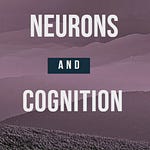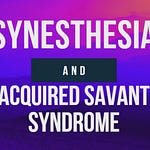I am going to be presenting at a neurology conference in Boston this week, and in preparation, I have been diving deeply into the topic of today’s video. SO MUCH SO that I almost want to redo this whole video, but I think for now I am just going to share the information here in the blog, and maybe I will update the video in the future to reflect all of the amazing research in this area. Thank you for watching and reading and supporting my work.
Memory represents one of the most studied yet complex cognitive functions, serving not merely as a recorded database but as an active, reconstructive process that shapes our understanding of ourselves and the world. Research has long demonstrated that most people possess metacognitive awareness about their own memory capabilities—the ability to assess whether information is stored in memory even when unable to recall it (Hart, 1965). This metamemory function allows individuals to access abstract qualities of their own memories and judge the likelihood of future memory performance, though recent research suggests this accuracy improves with practice independently of explicit metacognitive training (West et al., 2025).
Memory concerns remain widespread, with nearly one in eight Americans over age 60 reporting subjective memory decline (Alzheimer's Association, 2016). However, our understanding of memory loss has evolved significantly beyond simple models of gradual deterioration, revealing the intricate relationships between different memory systems and their underlying neural circuits.
The Hippocampus and Memory Formation: Lessons from Patient HM and Beyond
The landmark case of patient HM, who underwent bilateral hippocampal removal to control seizure activity, revolutionized our understanding of memory systems. HM demonstrated that the hippocampus is crucial for forming new episodic memories while leaving working memory and previously consolidated long-term memories relatively intact (Baddeley et al., 2009; Corkin, 2002). Notably, HM retained the ability to learn new motor skills, demonstrating that procedural learning operates through different neural circuits.
Recent hippocampal research has revealed even greater complexity in memory organization. Contemporary studies show that acquiring robust memories can constrain hippocampal activity within highly correlated neural patterns, potentially interfering with subsequent flexible memory formation (Gava et al., 2024). This suggests that the hippocampus operates as a dynamic system where different types of memory demands compete for neural resources.
Meta-analyses examining the relationship between hippocampal volume and memory performance in children and adolescents have found positive correlations between hippocampal structure and memory abilities during typical development (Botdorf et al., 2022), supporting the critical role of this region across the lifespan.
The Limbic System: Beyond Simple Emotion-Memory Connections
The limbic system encompasses interconnected brain regions including the hippocampus, amygdala, cingulate gyrus, and prefrontal cortical areas that collectively support emotion, memory, and behavioral regulation (Thompson, 2024). Current understanding recognizes the limbic system as supporting multiple functions including emotion, behavior, motivation, long-term memory, olfaction, and stress response (Torrico & Abdijadid, 2023).
Research has moved beyond viewing the amygdala simply as a "fear center." Modern studies identify the amygdala as crucial for forming memories specifically related to fear, with fearful memories formed after only a few repetitions, making fear learning a valuable model for investigating memory formation, consolidation, and recall (Queensland Brain Institute, 2024). The amygdala's role extends to modulating the strength and emotional content of memories across different contexts.
PTSD and Limbic System Dysfunction: Updated Models
Post-traumatic stress disorder (PTSD) exemplifies how limbic system dysfunction manifests in clinical populations. Recent neuroimaging research has refined our understanding of PTSD as a disorder of fear dysregulation involving complex interactions between limbic structures and prefrontal control regions.
Contemporary models emphasize that PTSD involves disrupted threat processing circuits, with the prefrontal cortex playing a central role in fear acquisition and extinction. Research shows that healthy individuals maintain coordinated threat circuits that enable adaptive threat expression, while PTSD is characterized by impaired functioning in the dorsolateral prefrontal cortex, ventromedial prefrontal cortex, and hippocampus, alongside enhanced amygdala and dorsal anterior cingulate activity (Kredlow et al., 2021).
Contrary to earlier assumptions about simple amygdala enlargement in PTSD, recent research reveals complex patterns of structural and functional changes. Functional connectivity studies show stronger connections between amygdala subregions and prefrontal cortex in PTSD, rather than uniform structural changes (Davis & Hamner, 2024).
The relationship between trauma and brain changes involves multiple neurochemical systems, with both cortisol and norepinephrine playing critical roles in stress response adaptations. Importantly, treatments that prove efficacious for PTSD demonstrate promotion of neurogenesis in animal studies and increased hippocampal volume in human patients (PMC, 2011).
Reconsidering "Pathological Altruism" and Social Decision-Making
The concept of "pathological altruism"—originally described as an inability to change strategies when others are taking advantage—has been updated through recent neuroscience research. Contemporary research defines pathological altruism as "altruism in which attempts to promote the welfare of others instead result in unanticipated harm," encompassing behaviors from codependency to ineffective social programs that worsen the situations they aim to improve (Oakley, 2013).
Recent studies using patients with damage to the ventromedial prefrontal cortex (vmPFC) show that this region is crucial for altruistic behavior. Patients with vmPFC damage demonstrate significantly reduced willingness to help others and exert less effort when they do choose to help, even when financial incentives are offered (University of Birmingham/Oxford study, 2024).
Emerging research suggests that altruism may be more hardwired than previously thought. Studies using transcranial magnetic stimulation to temporarily dampen prefrontal impulse control regions found that participants became 50% more generous, suggesting that our default tendency is toward prosocial behavior rather than selfishness (Christov-Moore & Iacoboni, 2016).
Metamemory and Awareness: Contemporary Findings
Recent research on metamemory—our knowledge about our own memory processes—has revealed important nuances about memory awareness. Studies show that metamemory accuracy improves with practice, but this improvement occurs regardless of whether individuals receive explicit practice making memory judgments, suggesting that enhanced metamemory results from factors other than conscious metacognitive monitoring (West et al., 2025).
Neuroimaging studies of confidence assessment during memory tasks show that the process of determining confidence in memory performance activates medial and lateral parietal regions typically associated with the "default network," while high versus low confidence judgments modulate activity in the hippocampus, cingulate, and other limbic regions (Chua et al., 2006).
Face Recognition and Social Processing
Research continues to reveal the complexity of face recognition deficits following brain injury. Studies of patients with right hemisphere damage demonstrate that awareness of cognitive deficits can be highly selective, with individuals sometimes aware of deficits in memory or motor function while remaining unaware of face recognition impairments (Young et al., 1990).
Modern research emphasizes that limbic structures, particularly the cingulate gyrus and amygdala, are crucial for social cognition processes including face perception, emotional processing, and theory of mind. Disruptions in these regions affect complex social behaviors necessary for interpersonal interactions (Medical News Today, 2024).
Future Directions and Clinical Implications
The field has moved toward more nuanced models recognizing that brain damage rarely produces clean, localized deficits. Contemporary theories like the limbic-reticular coupling theory suggest that memory processing involves complex interactions between limbic structures and reticular neuromodulatory systems, with the hippocampus and amygdala regulating descending limbic structures through multiple neurotransmitter pathways (Cai, 2018).
Importantly, research shows that the limbic system demonstrates plasticity, with emerging evidence that psychotherapy can restructure brain circuits. Cognitive behavioral therapy reduces limbic system activity in patients with phobias, while cognitive enhancement therapy improves social and emotional cognition in schizophrenia (Medical News Today, 2024).
These findings emphasize that while limbic and memory system damage can produce profound changes in cognition and behavior, the brain's capacity for adaptation and recovery provides hope for therapeutic interventions. Understanding these complex neural networks continues to inform both theoretical models of brain function and practical approaches to treating neurological and psychiatric disorders.
References
Baddeley, A., Eysenck, M. W., & Anderson, M. C. (2009). Memory. Psychology Press.
Botdorf, M., Canada, K. L., & Riggins, T. (2022). A meta-analysis of the relation between hippocampal volume and memory ability in typically developing children and adolescents. Hippocampus, 32(5), 386-400. https://doi.org/10.1002/hipo.23414
Cai, Z. J. (2018). The limbic-reticular coupling theory of memory processing in the brain and its greater compatibility over other theories. Dementia & Neuropsychologia, 12(2), 105-113. https://doi.org/10.1590/1980-57642018dn12-020001
Christov-Moore, L., & Iacoboni, M. (2016). Self-other resonance, its control and prosocial inclinations: Brain-behavior relationships. Human Brain Mapping, 37(4), 1544-1558.
Chua, E. F., Schacter, D. L., Rand-Giovannetti, E., & Sperling, R. A. (2006). Understanding metamemory: Neural correlates of the cognitive process and subjective level of confidence in recognition memory. NeuroImage, 29(4), 1150-1160.
Corkin, S. (2002). What's new with the amnesic patient H.M.? Nature Reviews Neuroscience, 3(2), 153-160.
Davis, L. L., & Hamner, M. B. (2024). Post-traumatic stress disorder: The role of the amygdala and potential therapeutic interventions – a review. Frontiers in Psychiatry, 15, 1356563. https://doi.org/10.3389/fpsyt.2024.1356563
Gava, G. P., Lopes-dos-Santos, V., Perestenko, P. V., Caixeta, F. V., Borges, F. S., Thome, C., ... & Dupret, D. (2024). Organizing the coactivity structure of the hippocampus from robust to flexible memory. Science, 385(6713), 1120-1127.
Hart, J. T. (1965). Memory and the feeling-of-knowing experience. Journal of Educational Psychology, 56(4), 208-216.
Kredlow, M. A., Fenster, R. J., Laurent, E. S., Ressler, K. J., & Phelps, E. A. (2021). Prefrontal cortex, amygdala, and threat processing: Implications for PTSD. Neuropsychopharmacology, 47(1), 247-259. https://doi.org/10.1038/s41386-021-01155-7
Medical News Today. (2024). The limbic system: Location, anatomy, and function. Retrieved from https://www.medicalnewstoday.com/articles/limbic-system
Oakley, B. A. (2013). Concepts and implications of altruism bias and pathological altruism. Proceedings of the National Academy of Sciences, 110(Suppl 2), 10408-10415.
Queensland Brain Institute. (2024). The limbic system. University of Queensland. Retrieved from https://qbi.uq.edu.au/brain/brain-anatomy/limbic-system
Thompson, A. (2024). The role of the limbic system in emotional regulation and memory formation. Journal of Neurobiology and Brain Imaging, 8(2), Article 20. https://doi.org/10.36648/ipnbi.8.2.20
Torrico, T. J., & Abdijadid, S. (2023). Neuroanatomy, limbic system. In StatPearls. StatPearls Publishing.
West, J. T., Kuhns, J. M., Touron, D. R., & Mulligan, N. W. (2025). Increased metamemory accuracy with practice does not require practice with metamemory. Quarterly Journal of Experimental Psychology, 78(1), 156-175. https://doi.org/10.1177/17470218241269322
Young, A. W., Hellawell, D. J., & Welch, J. (1990). Neglect and visual recognition. Brain, 113(5), 1253-1274.










